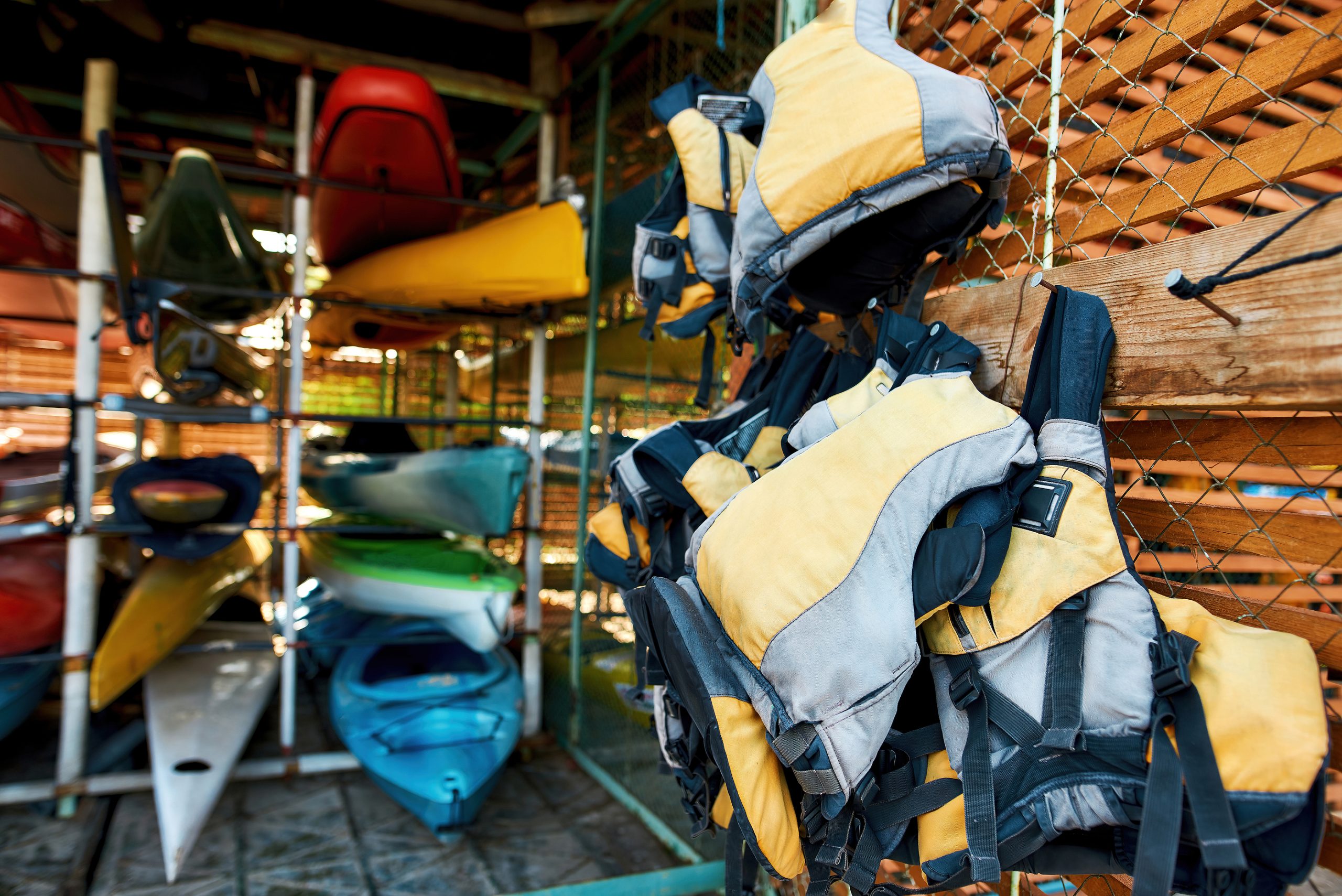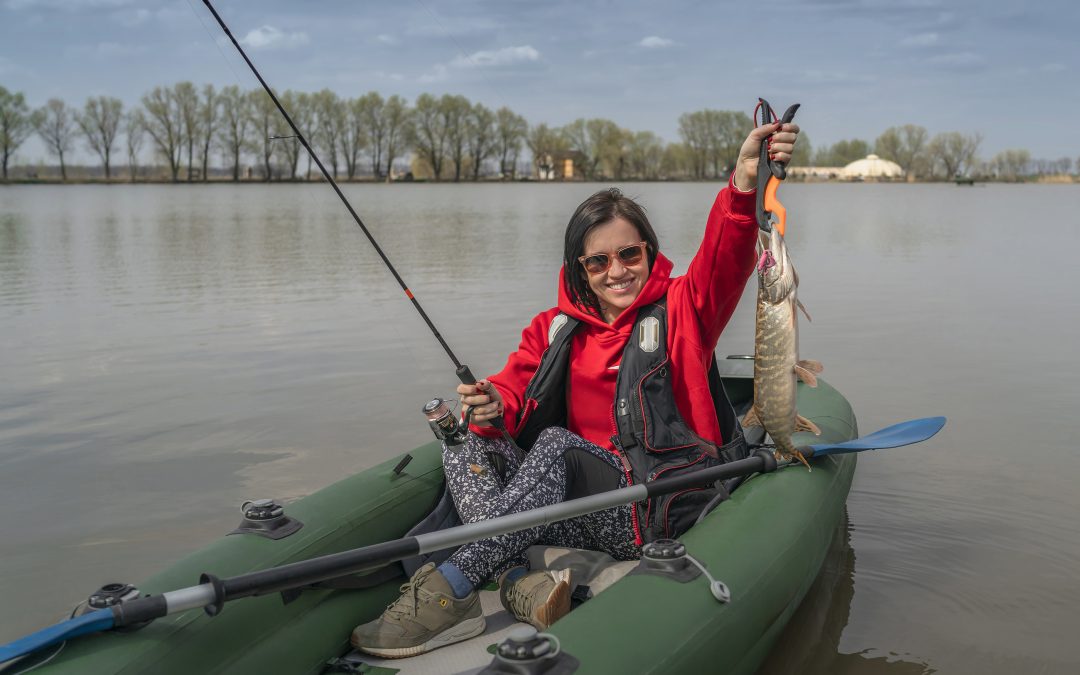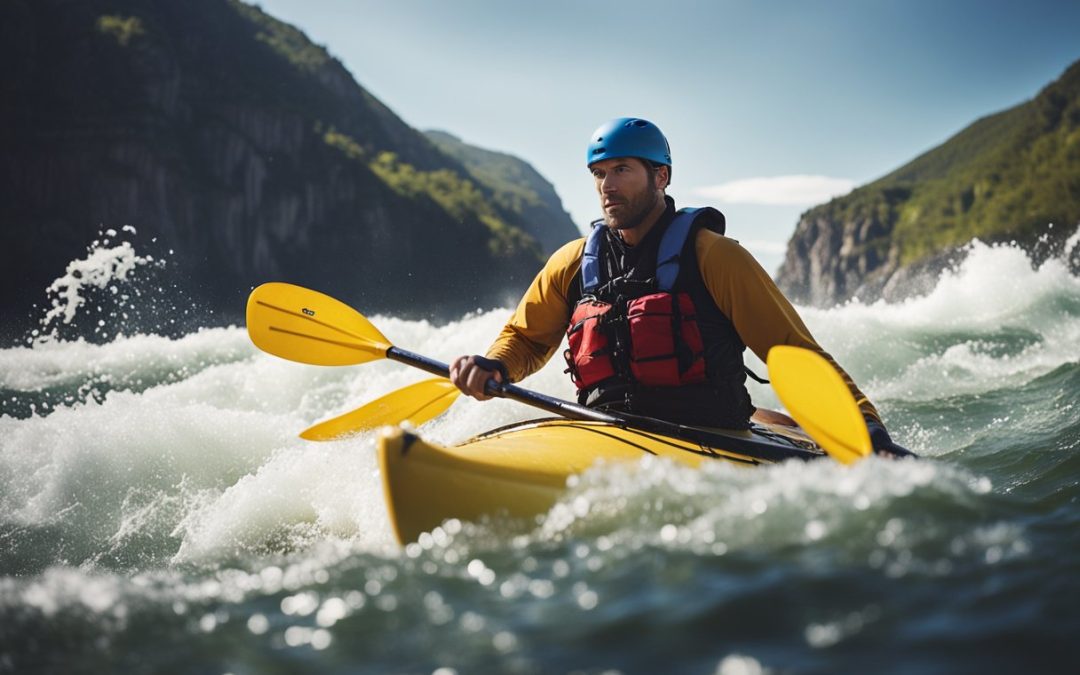What is Kayaking?
Kayaking is a human-powered water sport where the paddler sits facing forward in a kayak, a narrow boat with a closed deck and a double-bladed paddle. The paddler uses the paddle to propel the kayak through the water. Kayaking can be done on various bodies of water, including lakes, rivers, oceans, and even in some urban areas.
The word “kayak” comes from the Greenlandic word “qajaq,” which means “hunter’s boat.” The Inuits of Greenland and other Arctic regions used kayaks for hunting, fishing, and transportation. Today, kayaks are made from various materials, including fiberglass, plastic, and composites.
There are many different types of kayaks, each designed for a specific purpose. Some of the most popular types of kayaks include:
1. Recreational kayaks: These are the most common type of kayak and are designed for use on calm waters, such as lakes and ponds.
2. Whitewater kayaks: These are designed for paddling through rapids and other challenging water conditions.
3. Sea kayaks: These kayaks are designed for paddling in open water, like the ocean.
4. Touring kayaks: These kayaks are designed for long-distance paddling.
5. Fishing kayaks: These kayaks are designed for fishing. They often have features such as rod holders and live wells.
Here are some of the benefits of kayaking:
Exercise: Kayaking is a great way to get exercise. It is a low-impact activity that works your arms, back and core.
Exploration: Kayaking is a great way to explore new places. You can paddle to secluded coves, explore rivers, or even kayak in the ocean.
Nature: Kayaking is a great way to connect with nature. You can paddle through forests, see wildlife, and enjoy the water’s quiet.
Fun: Kayaking is a fun activity for people of all ages and skill levels.
If you are interested in kayaking, many resources are available to help you get started. You can find kayak rentals and tours at many outdoor recreation centers. You can also find kayak lessons and classes offered by local paddling clubs and organizations.
Safety Measures for Kayaking

Kayaking is a fun and rewarding outdoor activity, but it is essential to take safety precautions to avoid accidents. Here are some safety measures to keep in mind when kayaking:
- Always wear a life jacket. This is the most important safety precaution you can take when kayaking. A life vest will keep you afloat if you capsize or befall your kayak.
- Be aware of your surroundings. Pay attention to the weather conditions, the water level, and any hazards in the area. If you are kayaking in a new area, be sure to do your research and know what to expect.
- Paddle within your skill level. If you are a beginner, start with calm water and gradually work up to more challenging conditions.
- Don’t kayak alone. If you are kayaking in a group, stay within visual or verbal contact with each other. This will help you to stay safe if someone gets into trouble.
- Be prepared for anything. Bring the appropriate safety gear, such as a first-aid kit, whistle, map, and compass.
- Know how to self-rescue. If you capsize, learn how to get back into your kayak. There are many self-rescue techniques, so be sure to learn one appropriate for your kayak and skill level.
By complying with these safety and security preventative measures, you can assist to guarantee a safe and enjoyable kayaking experience.
Here are some additional safety tips:
- Check the weather report before you go kayaking. If there is a chance of high winds or rain, it is best to stay on shore.
- Let someone know where you are going and when you expect to be back. If you do not return on time, someone will know to look for you.
- Be aware of the tides and currents. If you are kayaking in an area with strong currents, be sure to know how to paddle against them.
- Avoid kayaking in areas with large waves or strong winds. These conditions can be dangerous and make it difficult to control your kayak.
- If you do capsize, stay calm and try to right your kayak. If you need help to right your kayak, call for help.
By following these safety tips, you can help to ensure a secure and delightful kayaking experience.
Environmental Awareness for kayaking

Environmental Awareness is crucial when engaging in kayaking or any outdoor activity. By adopting environmentally responsible practices, you can help preserve natural ecosystems, minimize your impact on the environment, and ensure the sustainability of kayaking for future generations. Here are some key points to consider:
- Leave No Trace: Follow the principles of Leave No Trace, which promote responsible outdoor ethics. Carry out everything you bring, including trash, food waste, and other items. Leave the environment as you found it without leaving traces of your visit.
- Respect Wildlife: Observe wildlife from a distance and avoid disturbing their natural behavior. Observe wildlife from a distance and avoid disturbing their natural behavior. Do not feed wildlife, as it disrupts their natural diet and behavior.
- Minimize Pollution: Prevent water pollution by avoiding soaps, detergents, or harmful chemicals in or near the water. Use biodegradable and eco-friendly products when necessary. Properly dispose of waste in designated areas and recycle whenever possible.
- Protect Aquatic Ecosystems: Be mindful of fragile aquatic ecosystems, such as coral reefs, seagrass beds, or sensitive habitats. Avoid dragging your kayak over these areas, as it can cause damage. Stay clear of shallow areas or submerged vegetation to avoid disturbing these environments.
- Follow Local Regulations: Familiarize yourself with and adhere to local regulations, including permits, restricted areas, and any specific rules for kayaking. These regulations are in place to protect the environment and ensure everyone’s safety.
- Educate Yourself: Learn about the ecosystems, habitats, and species you may encounter while kayaking. This knowledge will help you appreciate and respect the environment better. Consider joining educational programs or guided tours that provide insights into local ecosystems and conservation efforts.
- Choose Sustainable Gear: When purchasing kayaking gear, choose products made from sustainable materials and manufactured with minimal environmental impact. Look for eco-friendly options, such as kayaks made from recycled materials or paddles made from sustainable sources.
- Support Conservation Efforts: Contribute to conservation initiatives by supporting local organizations or participating in volunteer activities related to environmental conservation. These efforts help protect and restore natural areas for future generations to enjoy.
Remember, by practicing environmental Awareness while kayaking, you can minimize your impact on the environment and contribute to the long-term sustainability of the sport. Enjoy the beauty of nature responsibly and encourage others to do the same.
Training and Skills Development for Kayaking

There are many ways to develop your kayaking skills. Here are a few options:
- Take a kayaking class: This is a great way to learn the basics and get hands-on experience. Many different kayaking classes are available so that you can find one appropriate for your skill level and interests.
- Join a kayaking club or group: This is a great way to meet other kayakers and learn from more experienced paddlers. Many kayaking clubs and groups are available, so you can find one that is located in your area and caters to your interests.
- Read books and articles about kayaking: Many excellent books and articles can teach you about kayaking techniques, safety, and gear. Reading about kayaking can help you to learn more about the sport and to prepare for your next kayaking adventure.
- Watch videos about kayaking: Many great videos can teach you about kayaking techniques, safety, and gear. Watching videos can help you to visualize the techniques and to see how more experienced paddlers perform them.
- Practice regularly: The best way to improve your kayaking skills is to practice regularly. The more you paddle, the better you will become. So get out there and start paddling.
Here are some specific skills that you can develop for kayaking:
- Paddling techniques: There are many different paddling techniques that you can learn. Some of the most essential paddling techniques include the forward stroke, the sweep stroke, the draw stroke, the backstroke, and the sculling stroke.
- Self-rescue: If you capsize, you must know how to self-rescue. There are many self-rescue techniques, so be sure to learn one appropriate for your kayak and skill level.
- Navigation: If you are kayaking in unfamiliar areas, you must know how to navigate. This includes knowing how to use a map and compass and how to read the water.
- Hazard awareness: You need to be aware of the hazards that can be present in the water, such as rocks, currents, and wildlife.
- Safety: It is essential to know the safety precautions that need to be taken when kayaking. This includes wearing a life jacket, being aware of your surroundings, and paddling within your skill level.
By developing these skills, you can help to ensure a safe and enjoyable kayaking experience.
Here are some additional tips for training and developing your kayaking skills:
- Please start with the basics: Before you try any advanced techniques, it is essential to master the basics. This includes learning how to paddle effectively, how to turn your kayak, and how to self-rescue.
- Practice regularly: The more you practice, the better you will become. So get out there and start paddling!
- Find a mentor: If you know someone experienced in kayaking, ask them to mentor you. They can help you to learn the ropes and to improve your skills.
- Take a kayaking course: Many different kayaking courses are available so that you can find one appropriate for your skill level and interests.
- Attend kayaking events: There are many kayaking events held throughout the year. These events are a great way to meet other kayakers, learn new techniques, and have fun.
By following these tips, you can ensure that you are well-prepared for your kayaking adventures.
Health Benefits

Kayaking is a great way to get exercise and enjoy the outdoors. It is a low-impact activity that works your arms, back and core. Kayaking can also help improve cardiovascular health, reduce stress, and improve mood.
Here are some of the health benefits of kayaking:
- Improved cardiovascular health: Kayaking is a great way to increase your heart rate and cardiovascular health. Paddling a kayak can help increase your VO2 max, a measure of your body’s ability to use oxygen.
- Reduced stress: Kayaking can be a great way to reduce stress. The combination of being in nature and the physical activity of paddling can help to lower your heart rate and blood pressure and improve your mood.
- Improved mood: Kayaking can also help to improve your mood. The exercise releases endorphins, which have mood-boosting effects. Kayaking can also help you relax and de-stress, improving your overall mood.
- Weight loss: Kayaking can be a great way to burn calories and lose weight. A moderate-intensity kayaking workout can burn up to 400 calories per hour.
- Increased muscle strength: Kayaking can help to increase muscle strength in your arms, back, and core. The paddling motion works these muscles, and the resistance of the water provides an added challenge.
- Improved flexibility: Kayaking can also help to improve your flexibility. The paddling motion stretches your muscles and improves your range of motion.
- Improved balance: Kayaking can help to improve your balance. Maintaining your balance in a kayak can help improve your proprioception, which is your body’s Awareness of its position in space.
- Connection with nature: Kayaking is a great way to connect with nature. Being out on the water can help you relax and de-stress, giving you a sense of peace and tranquility.
Kayaking is an excellent option if you want fun and healthy exercise. It is a low-impact task that people of every age and fitness level can delight in. Kayaking can help you to improve your cardiovascular health, reduce stress, improve your mood, and lose weight. It can also help you connect with nature and improve flexibility and balance.
What are the best Kayaking Destinations?
There are many great kayaking destinations in the world, but here are a few of the best:
How To Get Started In Kayaking: Beginner’s Guide to Kayaking

Here are some tips on how to get started in kayaking:
1. Pick The Right Kayak
There are various types of kayaks offered. Choosing one that is appropriate for your skill level and the type of kayaking you want to do is essential. If you are a beginner, you should start with a recreational kayak. These kayaks are stable and easy to paddle, making them a good choice for calm waters. If you are interested in whitewater kayaking, you will need a different type of kayak, such as a whitewater kayak or a river kayak. These kayaks are designed to handle the rapids but are less stable than recreational kayaks.
2. Get The Right Gear
Get the right gear In addition to a kayak, you will need a few other pieces of gear, such as a paddle, a life jacket, a spray skirt, and a helmet. The paddle is used to propel the kayak through the water. The life jacket is essential for safety, and it should be worn at all times when kayaking. The spray skirt helps to keep water out of the kayak, and the helmet is worn to protect your head in the event of a capsize.
3. Take A Lesson
If you are a beginner, taking a kayaking lesson from a qualified instructor is a good idea. This will teach you the basics of kayaking, such as how to paddle, steer, and self-rescue.
4. Practice In A Safe Environment
Once you have taken a lesson, you can start practicing in a safe environment, such as a calm lake or pond. This will help you to get comfortable with the kayak and to learn how to control it.
5. Explore Different Types Of Kayaking
Once you have mastered the basics, you can start exploring different types of kayaking, such as flatwater kayaking, whitewater kayaking, and sea kayaking. Each type of kayaking offers its unique challenges and rewards.
Here are some additional tips for getting started in kayaking:
- Check the weather forecast before you go kayaking. If there is a chance of rain or high winds, it is best to stay on shore.
- Let someone know where you are going and when you expect to be back. If you do not return on time, someone will know to look for you.
- Be aware of the tides and currents. If you are kayaking in an area with strong currents, be sure to know how to paddle against them.
- Avoid kayaking in areas with large waves or strong winds. These conditions can be dangerous and make it difficult to control your kayak.
- If you do capsize, stay calm and try to right your kayak. If you need help to right your kayak, call for help.
By following these tips, you can help to ensure a safe and enjoyable kayaking experience.
5 Mistakes Every New Kayaker Makes… And How To Avoid Them
Here are five common mistakes that new kayakers often make and some tips on how to avoid them:
Kayaking is enjoyable and rewarding, but safety should always be a priority. Taking the time to learn the basics, practicing in safe conditions, and being aware of your surroundings will lead to a more enjoyable and safe kayaking experience.





















